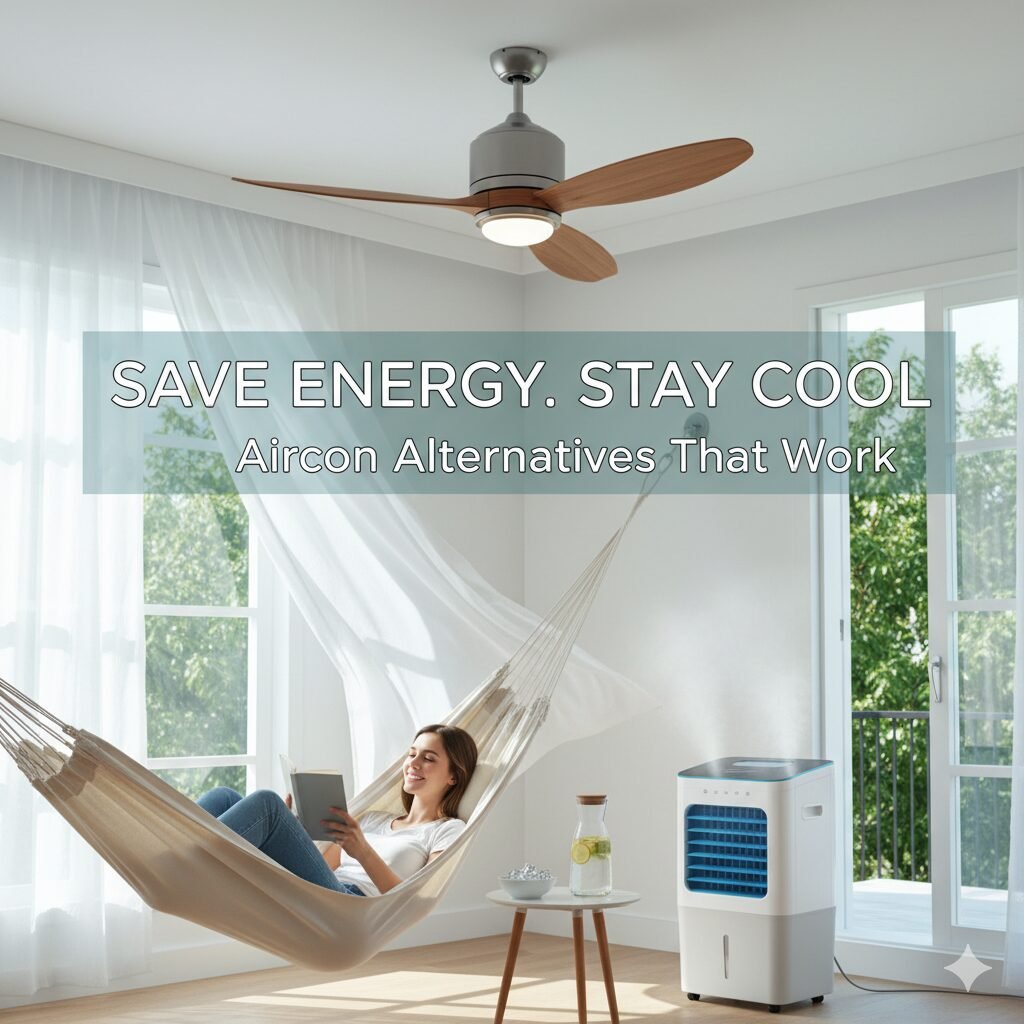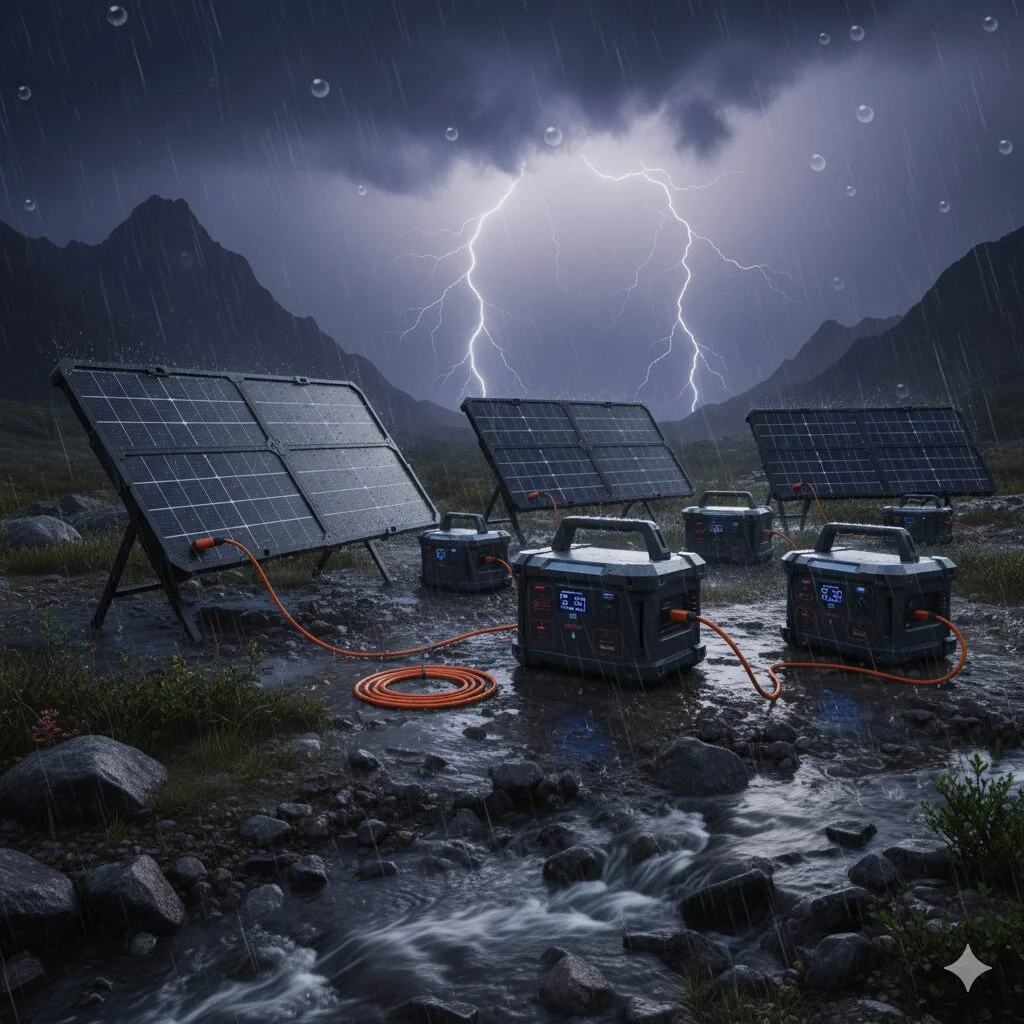- Beat the Heat & Save Energy: Why It Matters
- Best Aircon Alternatives That Actually Work
- Affordable DIY Tricks to Cool Your Space
- Green Cooling: Eco-Friendly Methods You’ll Love
- How to Optimize Your Home for Natural Cooling
- Fan-tastic Facts: Choosing the Right Fans
- Portable Coolers and Innovative Cooling Tech
- Small Habits With Big Cooling Impacts
- Save Energy Without Sacrificing Comfort
- Final Thoughts: A Cool Future Starts Now
- Sources and Citations
Beat the Heat & Save Energy: Why It Matters
In hotter climates and during blazing summer months, air conditioning seems like the only solution to beating the heat. But let’s face it — running the AC non-stop isn’t just harsh on our wallets, it’s also brutal on the environment. That’s exactly why exploring ways to save energy while staying cool: aircon alternatives that work is no longer just a curious idea — it’s a necessity.
The energy consumed by conventional air conditioning units is staggering. According to the International Energy Agency, air conditioning accounts for about 10% of global electricity consumption. That number, unfortunately, continues to rise. At the same time, we’re seeing energy prices climb and climate change worsen. The problem is cyclical. The hotter it gets, the more we rely on AC, and the more we rely on AC, the worse it gets.
And here’s the kicker — cooling doesn’t always require compression systems, Freon gas, or a device that hums like a jet engine. With a touch of creativity and a shift in mindset, we can stay refreshingly cool while reducing both our energy bills and carbon footprint.
In this in-depth guide, we’ll dive deep into real solutions. We’re talking fan hacks, architectural tips, tech breakthroughs, and budget-friendly strategies — all proven, all practical. Don’t sweat it (literally), because you’re about to uncover how to chill, save money, and help the planet, all at the same time.
Best Aircon Alternatives That Actually Work
Air-conditioning might be king, but there’s a whole kingdom of other options pioneering coolness without heavy energy use. Let’s roll up our sleeves and look beyond the obvious with these powerful aircon alternatives.
For instance, ceiling and portable fans have long been underestimated. When used strategically, they can significantly reduce the perceived temperature by enhancing air circulation throughout a room. Unlike traditional air conditioners, fans consume far less electricity, making them a sustainable and cost-effective alternative, especially when used in tandem with methods like opening windows during cooler parts of the day.
Another underrated solution is the use of thermal curtains and reflective window films. These simple additions can block out a considerable amount of sunlight during peak heat hours, which in turn keeps indoor spaces cooler. By controlling the amount of radiant heat entering your home, you drastically reduce the need for artificial cooling mechanisms.
Incorporating plants into your living space can also contribute to natural cooling. Indoor plants release moisture through a process called transpiration, subtly lowering the indoor temperature while also improving air quality. Outdoors, the strategic planting of trees and shrubs can shade homes and reduce overall heat absorption.
Lastly, consider building or design modifications like light-colored roofing, improved insulation, or the use of materials with high thermal mass. These changes not only combat heat but also promote energy efficiency year-round. By seeking these alternatives, it’s entirely possible to stay cool while making environmentally conscious choices.
1. Ceiling Fans and Oscillating Fans
When paired correctly with open windows and natural airflow, fans can work wonders. Ceiling fans circulate air and provide a breezy wind-chill effect, making the room feel several degrees cooler than it is.
Quick Tip: Set your ceiling fan to rotate counter-clockwise in summer. This pushes cool air down and creates a comfortable draft.
2. Evaporative Coolers (Swamp Coolers)
These bad boys use water evaporation to cool the air, consuming a fraction of the energy of AC units. They’re super effective in dry climates.
Pros:
- Energy-efficient
- Adds moisture to dry air
- Cheaper upfront and to run
| Feature | Evaporative Cooler | Air Conditioner |
|---|---|---|
| Energy Use | Low | High |
| Maintenance | Regular water refills | Occasional servicing |
| Cost | $100–$300 | $300–$2000+ |
3. Window & Tower Fans
Strategically placed tower fans or box fans can help move air in and out of rooms, especially at night. They’re perfect for larger spaces and offer multiple speed settings.
4. Whole-House Attic Fans
Installed in attics, these large fans pull hot air out of the house and draw in cooler outside air. They use far less energy than central cooling systems and cool the house rapidly.
Installation Tip: Time the fan to run just after sunset, when outside temps begin to drop.
Affordable DIY Tricks to Cool Your Space
Who says you need to blow your budget to stay cool? With a little ingenuity and a few household items, you can transform your space into a chill zone. Let’s explore some tried-and-true DIY tricks.
Ice Fan Hack
Fill a bowl with ice or frozen water bottles and place it in front of a table fan. The fan blows air over the ice, creating a mini DIY air conditioner.
Reflective Window Film
Window films reflect the sun’s rays, reducing heat gain. They’re affordable and surprisingly effective.
Cost Estimate:
- Reflective film for 6 standard windows: ~$50–$70
- Average indoor temp drop: 5–8°F
Block the Heat With Curtains or Blinds
Use blackout curtains or thermal insulation blinds. During the peak sun hours, drawing your shades can block over 70% of heat.
| Shade Types That Work Best: | Shade Type | Heat Reduction | Cost |
|---|---|---|---|
| Blackout Curtains | High | Medium | |
| Thermal Blinds | Very High | High | |
| Bamboo Shades | Medium | Low |
Cross-Ventilation Strategy
Open windows across from each other in the early morning or late evening. Place a fan at one to pull fresh air through the house and push out the warm air.
DIY Airflow Guide:
- Open low-facing windows on the cool side of the house.
- Use fans near upper windows on the warm side to expel heat.
- Create pathways for air to flow without interruptions.
Green Cooling: Eco-Friendly Methods You’ll Love
What if staying cool could also help keep the Earth cool? Say hello to sustainable solutions that can serve you year after year.
Rooftop Gardens & Green Roofs
Adding greenery to rooftops reduces heat absorption, providing natural insulation and reducing internal temperatures.
Solar-Powered Ventilation
Solar fans exhaust hot attic air, keeping the internal home cooler — all powered by the sun!
Shades and Awnings
Install adjustable exterior shades and awnings to block direct sun exposure while still allowing fresh air to circulate.
| Eco Cooling Method | Cooling Benefit | Energy Saved Annually |
|---|---|---|
| Green Roof | Up to 25% reduction in indoor temp | 15–35% |
| Solar Fan | Lowers attic by 30°F | ~140 kWh |
| Exterior Awnings | Blocks 65% direct sunlight | 10–15% |
Indoor Plants
Certain plants, like aloe vera, snake plant, and areca palms, naturally cool the air and purify toxins.
How to Optimize Your Home for Natural Cooling
Your home’s design can be either your worst enemy or your strongest ally in the battle against heat. Here’s how to make architecture work for you.
Insulation Isn’t Just for Winter
Proper insulation helps keep cool air in during summer just as it keeps warm air in during winter. Focus on:
- Attic insulation
- Wall insulation
- Weather-stripping doors/windows
Strategic Window Placement
If you’re building or renovating, go for cross-ventilation-friendly layouts. Place windows on opposite sides of rooms and include vents near ceilings.
Light-colored Roofs and Exterior Paint
Reflect sunlight instead of absorbing it! A white or light-colored roof can lower surface temperature by up to 50°F.
Comparison of Roof Colors:
| Roof Color | Avg. Surface Temp (°F) in Summer | Heat Reflection |
|---|---|---|
| Dark Gray | 160–190°F | Low |
| White | 110–130°F | High |
Landscaping Techniques
Plant shade trees or tall shrubs around east- and west-facing windows. Bonus: you’ll beautify the space while reducing your cooling load.
Fan-tastic Facts: Choosing the Right Fans
Fans come in all shapes and sizes these days — and picking the right one makes all the difference. Let’s break it down.
Types of Fans and Their Best Uses
| Fan Type | Best For | Cooling Power | Portability |
|---|---|---|---|
| Ceiling Fan | Large rooms | Moderate | Fixed |
| Tower Fan | Bedrooms, offices | Moderate | High |
| Box Fan | Windows, doorways | High | Medium |
| Pedestal Fan | Living areas | Moderate | High |
| Window Fan | Night-time cooling | High | Fixed |
BLDC Fans: The Energy-Saving Revolution
Brushless DC fans (BLDC fans) use up to 65% less energy than normal induction motor fans. They’re a bit pricier but they pay back fast!
Fan Tips:
- Always use fans with open windows at night.
- Set timers to switch off automatically.
- Clean blades monthly for optimal airflow.
Portable Coolers and Innovative Cooling Tech
Technology is catching up with Mother Nature. Portable coolers and smart sensors can now outperform mini ACs in terms of efficiency.
Personal Air Coolers
Compact and USB powered, these mini air coolers are perfect for desks or bedside tables. Add cold water or ice and you’re golden.
Top Picks:
- Arctic Air Ultra
- Evapolar EVA Chill
- Zero Breeze (portable compressor)
Phase Change Materials (PCMs)
Used inside pillows, mattresses, and wearables, PCMs absorb body heat and keep you cool, without any electricity.
Smart Thermostats
Even without AC, smart climate systems can regulate fans and ventilation intelligently based on time, humidity, and temp.
Tech Table:
| Product | Benefit | Cost |
|---|---|---|
| Personal Cooler | Spot cooling | $30–$100 |
| PCM Bedding | Sleep cool all night | $50–$200 |
| Smart Fan Thermostat | Automated temp sync | $80–$150 |
Small Habits With Big Cooling Impacts
Sometimes, cooling your body makes more sense than cooling an entire room. These micro-habits can change the game.
Dress Smart
Stick with loose, light-colored clothes made of cotton or moisture-wicking fabric. Avoid dark colors that trap heat.
Hydrate Often
Cold water, cucumber-infused drinks, and iced teas help regulate body temperature naturally.
Avoid Using Heat-Producing Appliances
Stoves, ovens, dryers, and incandescent lights add unnecessary heat. Switch to:
- LED bulbs
- Microwaves
- Outdoor grilling
Sleep Cooler
Use breathable bedding and try special cooling pillows. Also consider placing your mattress on the floor where it’s cooler.
Save Energy Without Sacrificing Comfort
Let’s bring it all together. Saving energy while staying cool isn’t about sweating it out in silence. It’s about being smart, strategic, and sometimes a bit crafty.
Create Your Personalized Cooling Strategy:
- Location matters – Use fans at strategic points in your house.
- Adopt solar and green habits – Ventilate with the sun’s help.
- Stay cool, physically – Hydrate and wear breathable clothing.
- Tech it up – From portable evaporative coolers to smart fans, leverage modern inventions.
- Mind your structure – Insulate, shade, and reflect.
Monthly Savings Potential
A smart mix of natural and tech solutions can lower your energy bills significantly.
| Solution | Estimated Savings/Month |
|---|---|
| Fan instead of AC (6 hrs/day) | $30–$60 |
| Insulation improvements | $20–$50 |
| Reflective window treatments | $10–$25 |
| Avoiding heat-producing appliances | $5–$15 |
Total monthly potential: $65–$150+
Final Thoughts: A Cool Future Starts Now
Let’s be real — the sweltering heat isn’t going anywhere anytime soon. But neither are smart people like you who are ready to take control. By making intentional choices, from installing reflective window film to embracing personal coolers and planting shade trees, you’re doing more than staying cool — you’re shaping a sustainable future.
Remember, “Save Energy While Staying Cool: Aircon Alternatives That Work” isn’t just a catchy title. It’s a lifestyle. Every watt saved and degree dropped counts toward a better tomorrow. So dim the lights, power down that AC, and embrace the chill revolution. Because staying cool has never felt this good — or this right.
Sources and Citations
1. Energy.gov – Passive Solar Home Design – https://www.energy.gov/energysaver/passive-solar-home-design
2. National Renewable Energy Laboratory – Cooling Strategies – https://www.nrel.gov/buildings/cooling-strategies.html
3. The Spruce – Alternatives to Air Conditioning – https://www.thespruce.com/alternatives-to-air-conditioning-1388832
4. Environmental Protection Agency (EPA) – Energy Efficient Cooling – https://www.epa.gov/greenhomes/energy-efficient-cooling
5. U.S. Green Building Council (USGBC) – Sustainable Cooling Solutions – https://www.usgbc.org/articles/sustainable-building-practices-cooling
These sources provide insights into sustainable and energy-efficient alternatives to traditional air conditioning systems.








Join The Discussion